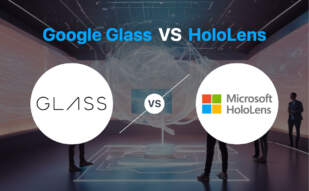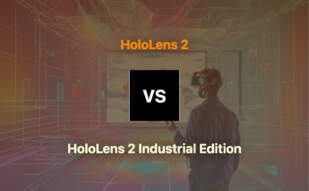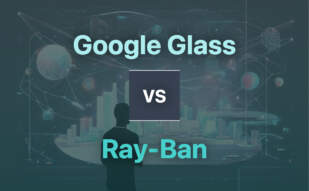Between Google Glass and the remarkable HoloLens 2, we endorse the latter for its extensive enterprise-focused solutions, razor-sharp resolution, and superior hand-tracking capabilities, positioning it as the paramount option for developers in education or productivity sectors.

Key Differences Between Google Glass and HoloLens 2
- The HoloLens 2, unlike Google Glass, leverages a transparent lens built onto a visor for an enhanced comfort.
- While both utilise voice commands, HoloLens 2 advances further with exceptional hand-tracking and object-anchoring abilities.
- The HoloLens 2 operates with a powerful Snapdragon 850 processor and generous 64GB memory, outperforming Google Glass.
- Google Glass is designed for factory, warehouse, and hospital environments, whereas HoloLens 2 targets a broader enterprise market including educational and productivity applications.
- HoloLens 2 provides an impressive 2048×1080 optical display resolution, markedly superior to Google Glass.
- Google Glass is primarily controlled using motion and voice recognition. HoloLens 2, on the other hand, allows seamless gesture controls for real-time 3D interactions.
| Comparison | Google Glass | HoloLens 2 |
|---|---|---|
| Target Market | Professional Use, Factories, Warehouses, Hospitals | Enterprise Market, Productivity, Education |
| Initial Release | Launched in 2013, Resumed in 2017 | Launched in 2019 |
| Device Type | Wearable Android Device | Headset |
| OS | Android Based | Windows Mixed Reality |
| Connectivity | WiFi/Bluetooth | WiFi/Bluetooth |
| Sensing Mechanisms | Voice-, Motion-Control, Facial, Head Movements | Hand-tracking and Eye-tracking |
| Display Technology | Micro-projector on FSC LCOS system | Transparent Lenses with waveguide technology |
| Visual Features | Google search, translations, reminders, access to Google Maps, video calls | Immersive AR experiences, multi-user AR collaborations, spatial awareness |
| Audio Features | Supports Voice Calls | 5-mic Array for Communication and Voice Commands |
| Hardware | Camera, touchpad | Sensors, Projection Lenses, 3D Audio Speakers, Cameras |
| Usability Enhancements | Augmented reality with visual, audio, and location-based inputs | Hand and eye tracking, gesture controls, adjustable headstraps and IPD lenses |
What Is Google Glass and Who’s It For?
Google Glass is a high-tech, voice and motion-activated Android device that’s wearable, offering users an unrivaled augmented reality experience. Launched in 2013 and later renewed in 2017 for professional use, this wonder gadget streams information directly to the user’s field of vision through a semi-transparent screen fitted onto the glasses. Built for professionals operating in factories, warehouses, hospitals, it provides a blend of safety, efficiency, and real-time updates – the future of workplace efficiency.
Google Glass brilliantly syncs with devices like phones and computers, supports photo sharing, voice/video calls, as well as step-by-step directions. All thanks to integrated Google tech such as Google Now, Google Maps, and Google Hangouts. The enterprise edition is also capable of integrating with third-party apps, making life easier and smarter for its users.
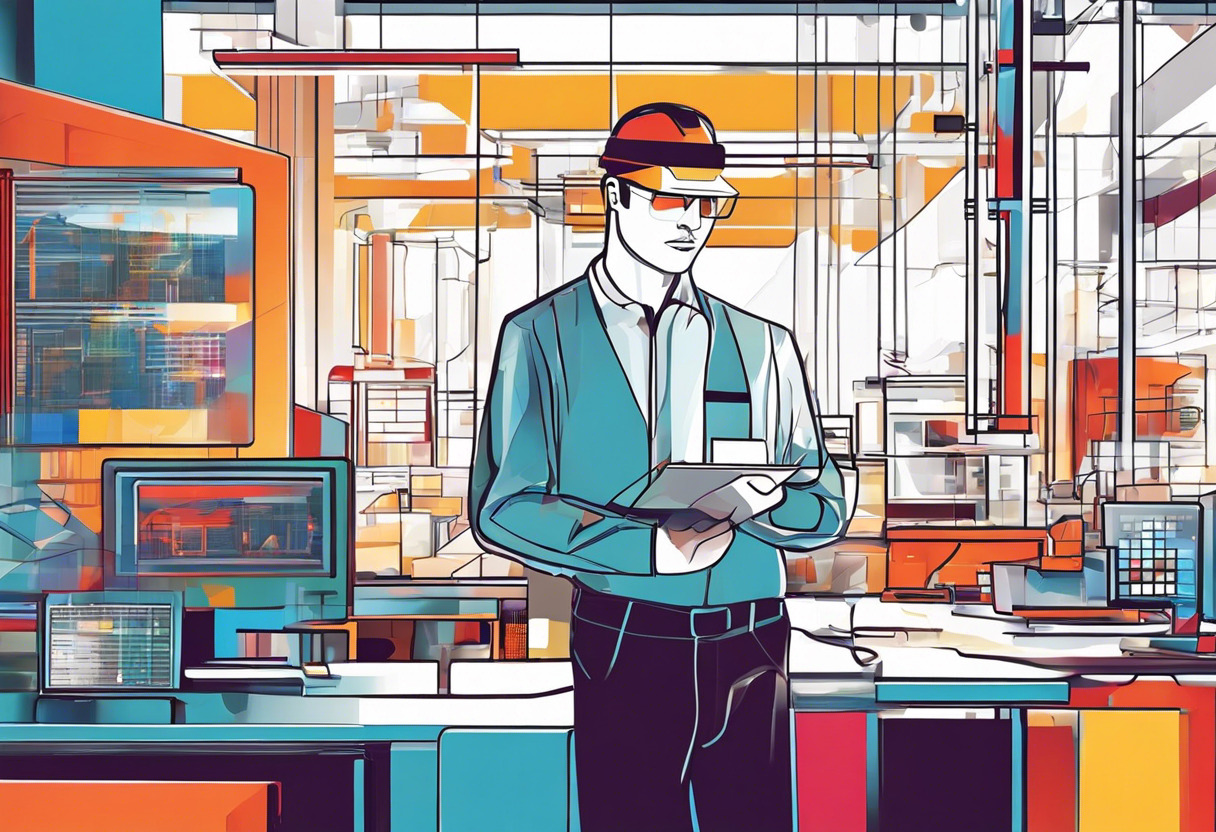
Pros of Google Glass
- Efficient and hands-free device
- Real-time updates and integrations
- Strong third-party app capabilities
- Boosts productivity and safety in workplaces
Cons of Google Glass
- Raises privacy concerns
- Limited to professional use
- Not compatible with current eyewear
What Is HoloLens 2 and Who’s It For?
The HoloLens 2, a cutting-edge product from Microsoft’s stable, marks the genesis of a new era in mixed reality headsets. Designed especially for the enterprise market, this $3,500 headset strategically forgoes entertainment and gaming to primarily focus on productivity and education. Weighing just 566 grams, HoloLens 2 boasts comfort, great optical resolution, efficient hand-tracking, and other features that promise real and measurable boosts to workplace productivity.
This headset’s specs are impressive. With a 1-MP Time-of-Flight depth sensor, infrared cameras, a Qualcomm Snapdragon 850 processor, and 4GB DDR4 RAM, HoloLens 2 offers powerful computing capabilities. The integration of AzureCloud storage and its operating system provides ground-breaking solutions, and the application ecosystem allows for the creation of custom apps. The device further showcases its prowess with a specialized display technology and improved field of view.

Pros of HoloLens 2
- Productivity-focused, perfect for education and enterprises
- Comfortable and lightweight for easy, long-term use
- Upgraded resolution and improved field of view
- Feature-rich with great mix of hardware and software attributes
Cons of HoloLens 2
- Expensive with its $3,500 price tag
- Primarily specific to the enterprise market
- Little emphasis on gaming or entertainment
- May have a limited battery lifespan under heavy use
The Verdict: Google Glass vs HoloLens 2
In the field of AR wearables, two fierce competitors emerge: Google Glass Enterprise Edition 2 and Microsoft’s HoloLens 2. But which reigns supreme?
For the Cost-Conscious Professional
For professionals who value functionality without breaking the bank, Google Glass presents itself as a robust choice. Its capabilities—from photo/video capture to voice recognition—are built to streamline your work process. Whether you’re an on-the-move executive or factory worker, it facilitates real-time updates, ensuring you’re always in the loop. Plus, with compatibility to prescription eyewear frames, comfort doesn’t compromise utility.

Demanding Enterprise Environments
However, the terrain shifts for that want a more immersive, enterprise-focused solution. HoloLens 2 is an investment in both price and experience; with its advanced hand-tracking, camera resolution and pronounced focus on productivity and education. Moreover, its integration with AzureCloud and extensive developer resources unlock custom app potentials, a major plus for enterprise environments.
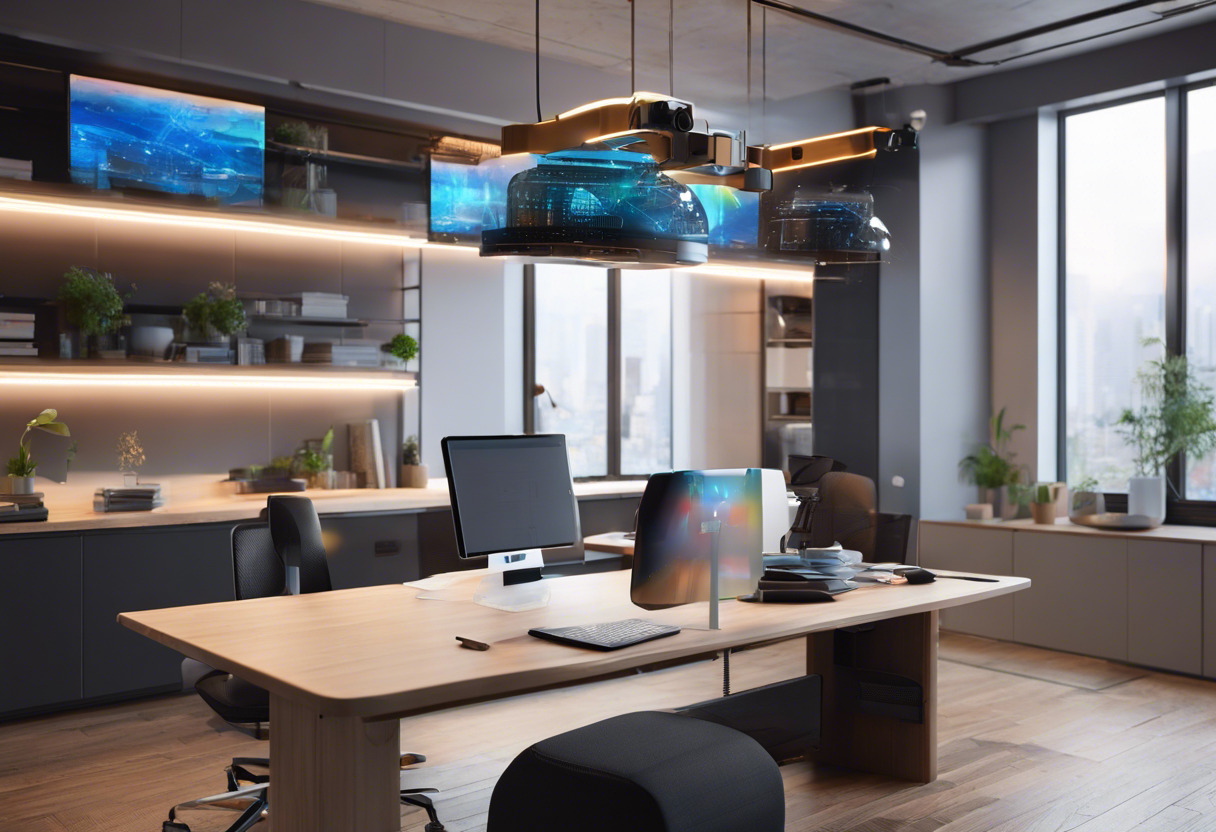
For the Comfort Seeker
HoloLens 2’s emphasis on ergonomics hits the sweetspot for users after a comfortable, all-day wearable. The adjustable ratchet mechanism and IPD lenses combined with its form-fitting headstraps ensure comfortable and continuous use—a perfect ally for extensive AR sessions.
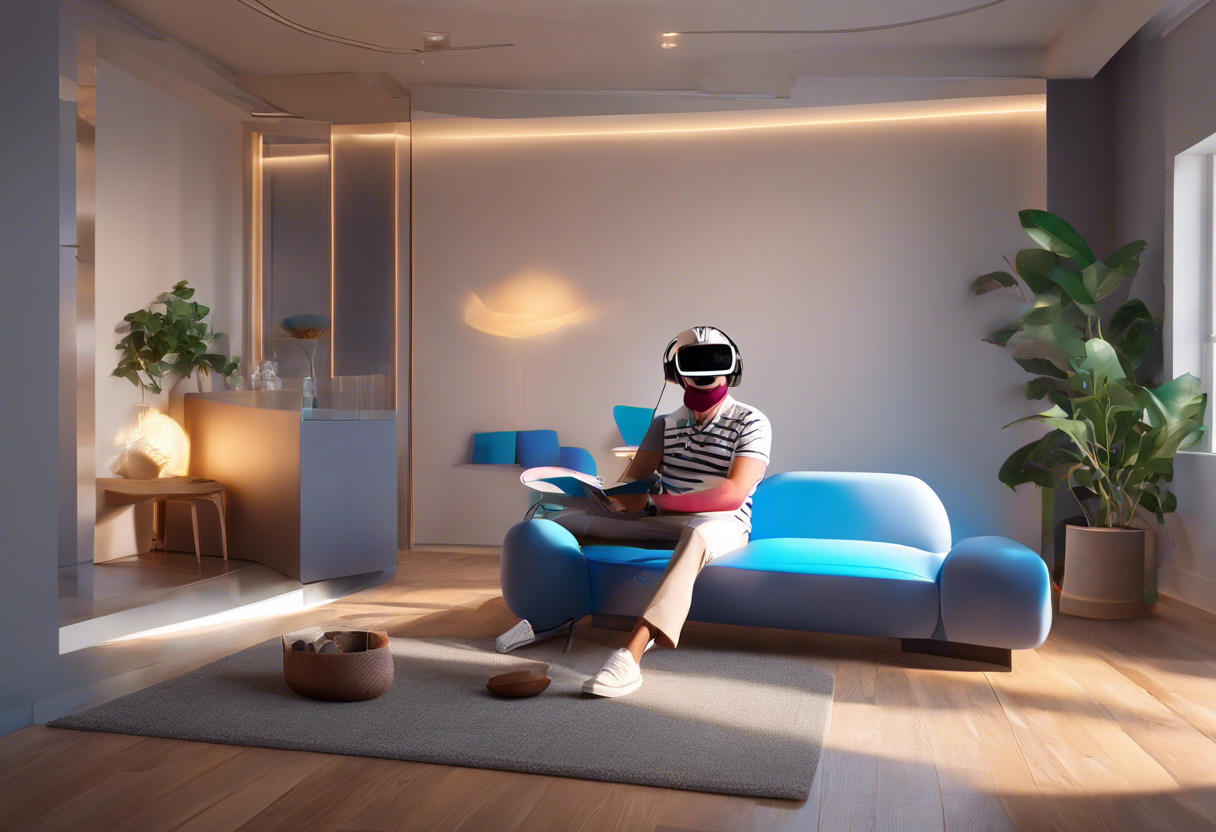
In the showdown between Google Glass and HoloLens 2, professionals etching for cost-effective utility may find solace in Google Glass—a dependable all-rounder—yet the immersive, high-end features of HoloLens 2 might better cater to enterprise environments and comfort seekers. Ultimately, the choice is contingent upon your work needs and budget constraints.
Grant Sullivan
Content writer @ Aircada and self proclaimed board game strategist by day, AI developer by night.



